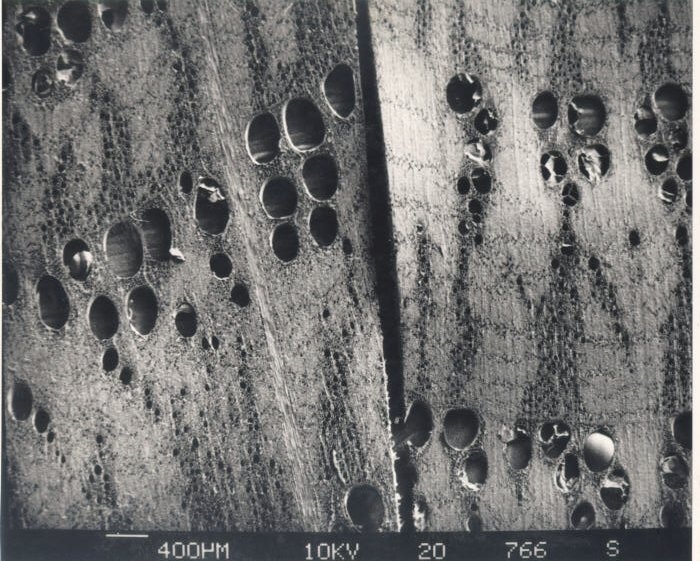 Figure 1. Radial sections of the wood of oak showing the wood of a shaken tree (left), and an unshaken one ( right). The vessels of the shaken tree have larger cross sectional areas, the biggest being about 0.3 mm.
Figure 1. Radial sections of the wood of oak showing the wood of a shaken tree (left), and an unshaken one ( right). The vessels of the shaken tree have larger cross sectional areas, the biggest being about 0.3 mm.
The term ‘shake’ describes the longitudinal separations in the wood of standing oak (and sweet chestnut) trees that can severely reduce the conversion potential of stems. They occur either radially (star shake), or around the circumference of an annual ring (ring shake). The separations, if not already large, tend to extend during timber processing. Shake has been recognized as a serious problem to users of oak since at least the time of John Evelyn in 1664. It occurs in nearly all British and Irish oak plantations and quite often affects more than 50% of the trees in a stand. The roadside value of shaken timber may be as little as 20% of that of sound timber. It has been estimated that an average of a little over 20% of all oaks in Great Britain may be shaken though there are regional variations. A consequence of this is that the Timber Trade has low expectations of oak, which are reflected in low prices.
Work on shake by the Forestry Commission has stressed that to avoid it oak should not be grown on dry, stony and gravelly soils, and damage to trees should be avoided in harvesting. These can act as ‘triggers’ for shake. The two native oaks and sweet chestnut are strongly ring-porous species. The earlywood produced each year has extremely large vessels (Figure 1), often up to 0.3 mm in diameter. They can be seen with the naked eye and are many times larger than the vessels of other species. Materials scientists who work on wood and other cellular materials have found that under tension (as in the heartwood of trees), flaws, cracks, or a few exceptionally large cells can cause cell walls to fracture locally. These fractures can spread and give rise to ‘shakes’.
Investigations at Oxford University have indicated that a ‘predisposition’ to shake is present in all oaks, but especially those with larger-than-average vessels. Sound trees tend to have slightly smaller vessels. Like many of the properties of wood, vessel size, and hence a predisposition to shake, has been found to be a very highly heritable characteristic, and therefore amenable to genetic manipulation. It is for this reason that all the oak trees in the FTT breeding seedling orchards are progeny of mother trees with smaller-than-average vessels. We hope to produce seed that will grow into both well formed trees as well as trees with much less predisposition to shake that the current populations in British and Irish woodlands.
It is possible to recognize trees with larger or smaller vessels easily in field from the time that they come into leaf in the spring. Within any stand of oaks, those that flush latest have the biggest vessels. Oak growers could therefore quite easily remove shake-prone trees i.e. those with large vessels, in thinnings over the course of a rotation if they are marked at flushing time in the spring.
